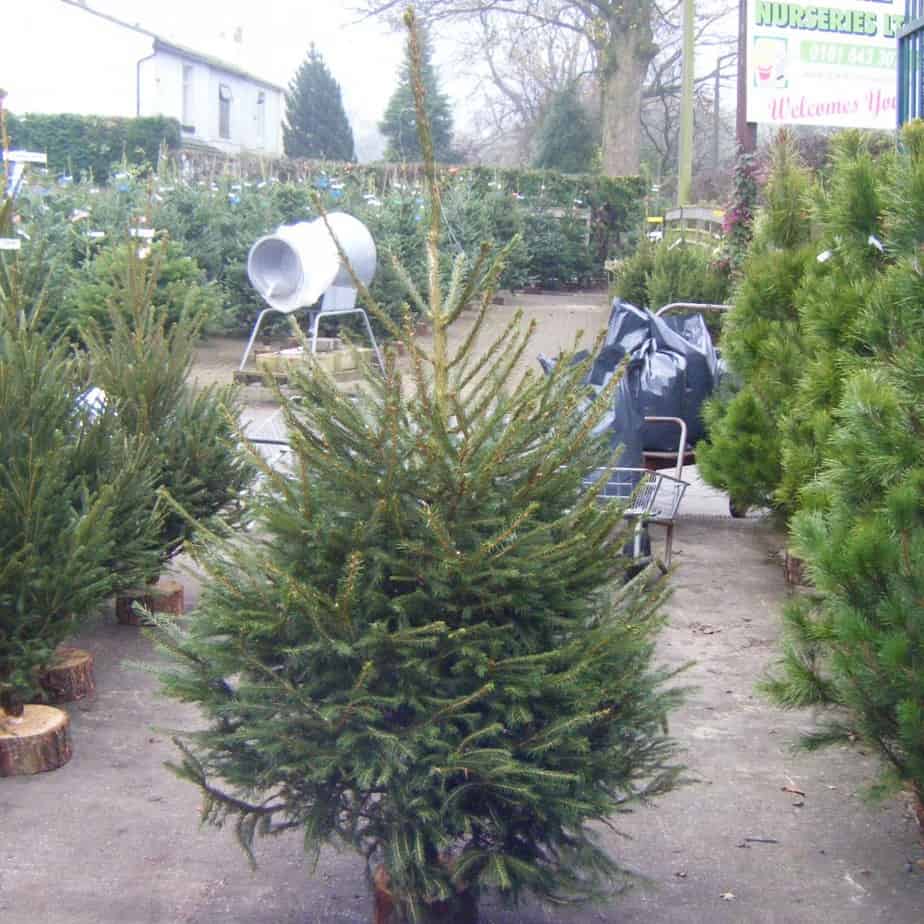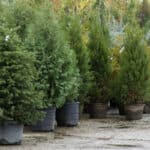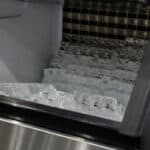Our site is reader supported, this means we may earn a small commission from Amazon and other affiliates when you buy through links on our site.
It’s long been an English tradition for the whole family to wrap up warm with their scarves and gloves and make their yearly trip to their local garden centre, Christmas tree farm or nursery to pick out the perfect Christmas tree.
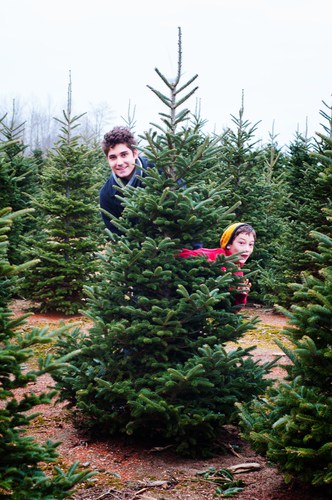
If you are lucky enough, you might live near an actual Christmas tree farm where you can choose your tree before it has even been cut. Now you can’t get much more freshly cut than that!
Below are the main types of real Christmas trees:
- Spruce Christmas tree – Known for dropping needles, not ideal for indoors
- Blue Spruce – Low needle drop
- Fraser Fir Christmas tree – Low needle drop
- Nordman Fir Christmas tree – Low needle drop
- Scots Pine Christmas tree – Low needle drop
- Danish Pine christmas tree – Low needle drop
More on these different types and choosing one further down!
Christmas Tree Types
In the UK there are 6 types of Christmas trees that are often available. Please see below:
- Blue Spruce – These trees have good needle retention unlike the traditional Spruce and have a nice fragrance and conical shape. These trees, however, are hard to find as cut trees and are usually sold as potted or pot grown Christmas trees.
- Fraser Fir – This newer variety has become very popular over the last few years and has a nice fragrance and good needle retention. It has dark green/blue and flattish foliage and these trees are not quite as perfectly shaped as some of the other types, but they are generally more narrow at the base making them easier to fit into smaller spaces. If you find a nice shaped tree, they can make the perfect choice for a small narrow area where a wider tree just would not fit.
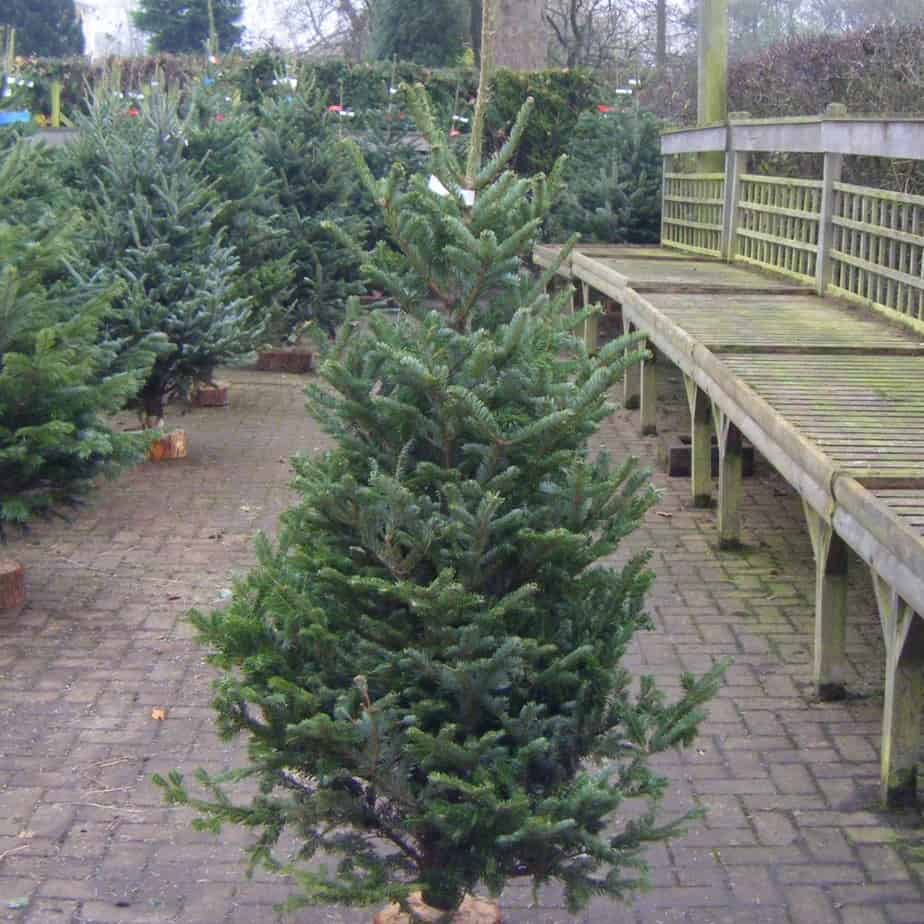
- Nordman Fir – These are probably the most popular variety and for a good reason. They have the perfect traditional cone shape and have deep green foliage with a striking blue underneath. They have a good needle-retention so you won’t have hundreds of needles to clean up. The only downside is that they can be quite wide and so can be too big for some smaller spaces.
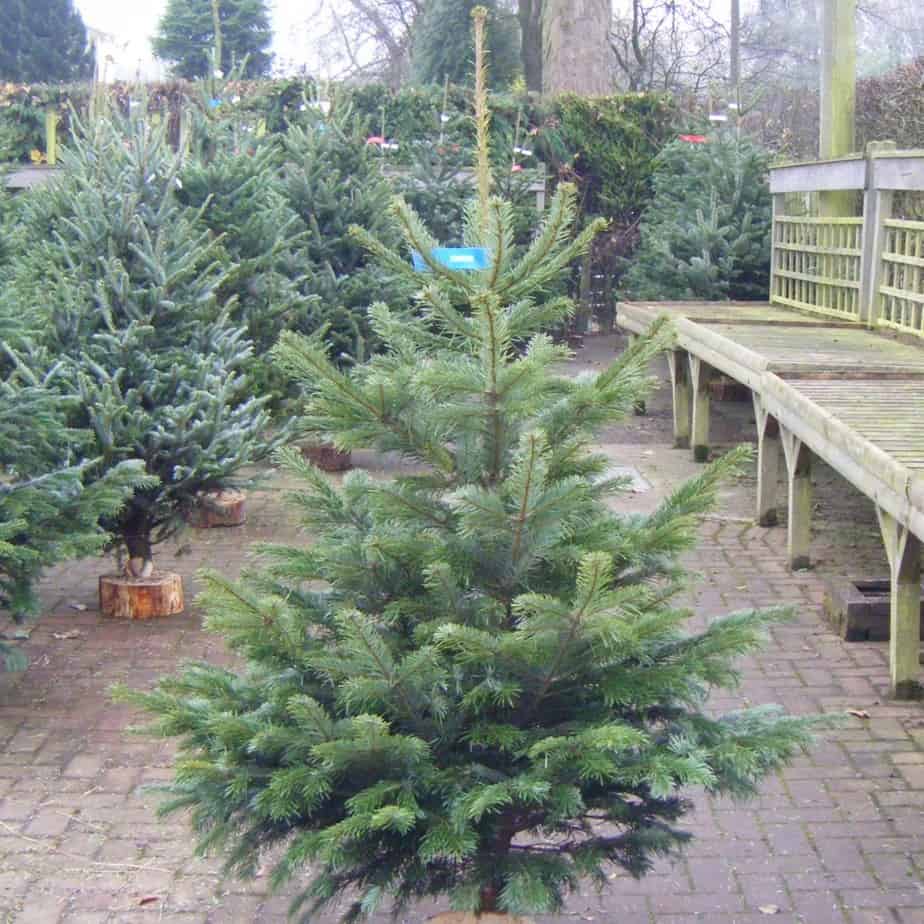
- Spruce (NOT a low drop variety but okay if outside) – These trees are still very popular today and are the original Christmas tree. They have a perfect shape, nice fragrance and are usually cheaper compared to other types. The downside is they don’t have very good needle retention in modern heated homes. That being said, if you want a tree for outside they won’t loose their needles and are ideal. If you are very traditional and only have your tree up for a few days, they will be fine inside the home.
- Scots Pine – The Scots Pine one of the cheaper varieties available because they grow very quickly. They can be purchased at very large sizes, for example, you can get a tree that is 7-8ft for the same price as what a Nordman Fir might be that is 6ft in size. They have very good needle-retention and are usually very large trees but they are not always symmetrical all the way around. You need a large space for a Scots Pine, they have very large, soft needles and big branches.
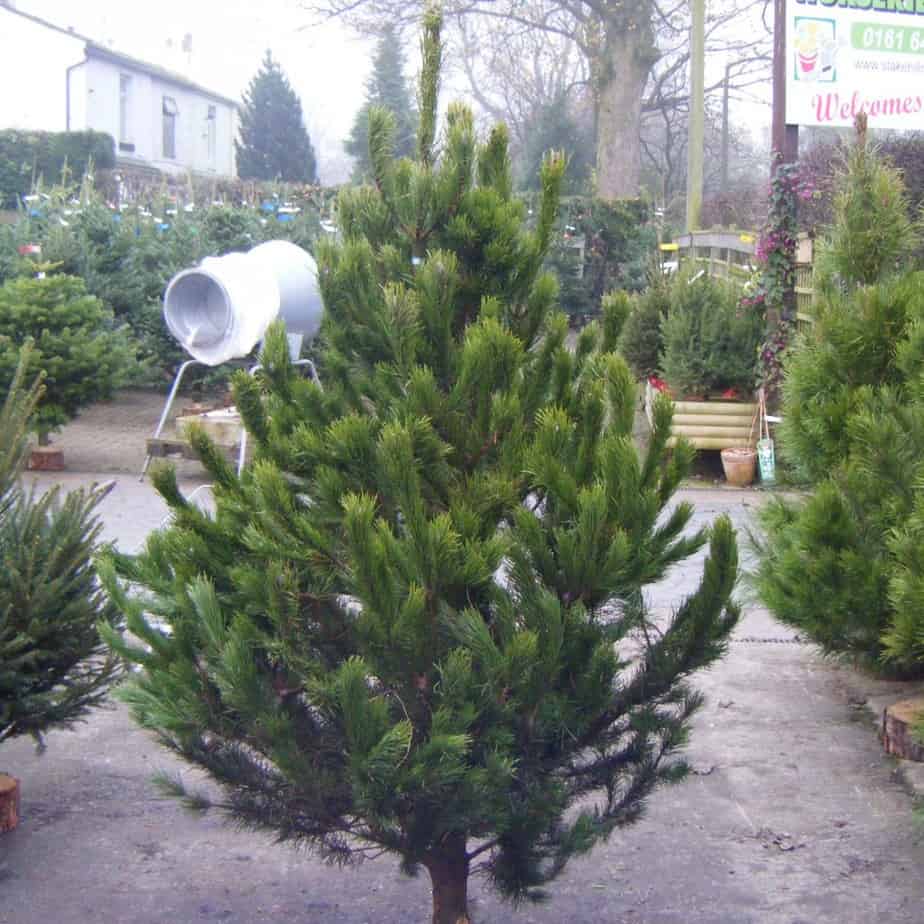
- Lodgepole Pine – Another tree with good needle-retention, these trees are usually very straight with large gaps between each row of branches. They have not got quite as strong a fragrance as other Christmas trees and their needles are not as soft. Quick fact, these were used by Native Americans to make the lodges, which is where they get the name ‘Lodgepole Pine’ from.
Why choose a real Christmas tree?
There are many advantages to buying a real Christmas tree rather than an artificial tree. The main reason is the fragrance they give that simply reminds you, Christmas is coming!
There is nothing better than the fragrant smell of a fresh Christmas tree!
Most Christmas trees sold in the UK are grown in England, Scotland and Wales, so you know you are buying a locally grown product. I strongly recommend you support British Christmas tree farms.
The difference between potted, pot grown and cut Christmas trees
When buying a real Christmas tree it is important to understand how they come, as some come with roots and others don’t. This means that if you buy one with roots it can be planted out into a large pot or into the ground after Christmas.
Potted Christmas trees
Potted Christmas trees are trees that have been dug up and planted straight into large pots, ready for sale. These trees can be planted out after Christmas but the roots are likely to be loose in the pot.
The important thing to remember with these trees is that because they have been dug up and may have limited roots, they don’t always survive after Christmas if planted.
Pot Grown Christmas trees
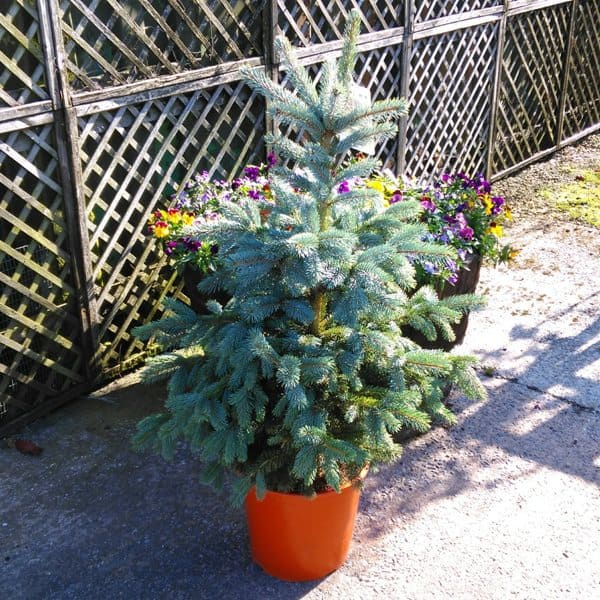
Pot grown trees are just that “pot grown“. This means that they have either been grown from very young plants in their pots or dug up from fields, very early in the season. This means that they will have a very established root system in the pot and will nearly always survive if planted after Christmas.
You can learn more about how to grow Christmas trees in pots in my guide here.
You can also learn how to plant a real Christmas tree here.
Cut Christmas Tree
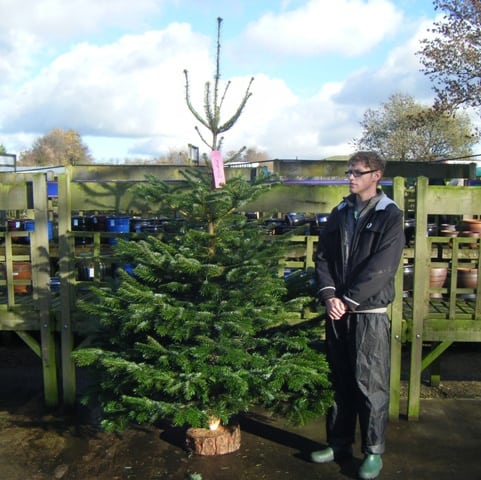
Cut Christmas trees are the most popular type of Christmas trees sold for the festive season. They are simply cut and need to be placed in a Christmas tree stand. These cannot be planted out after Christmas as they have no roots.
Local councils usually have areas where you can drop your tree off after Christmas and they recycle them by shredding them, making them into bark and mulch for local parks.
Which type of Christmas tree should you buy?
If you want to put a Christmas tree up for a couple of weeks, just for Christmas, then you probably want to buy a cut Christmas tree but avoid Spruce Christmas trees as they drop their needles too quickly indoors.
If you want your Christmas tree to be up for a little longer and maybe in a warm area (but still cool) in the house then a potted tree may be best as it will retain its moisture adequately and not drop its needles as quickly in a warm environment.
If you want a Christmas tree to plant up, either potting on into a large tub or planting in the ground, then we would advise buying a pot grown tree as they have good root systems that are essential for planting after Christmas.
Tips for keeping your tree looking fresher for longer
Always use a stand that holds water, I recommend the Krinner Christmas tree stand, which I review here. Before putting your tree into the stand, cut 1-2 inches off the base of the tree.
This will ensure the tree can take up water (in the same way cut flowers do) and will last longer. Keep an eye on the water in the stand and top up when low.
Try to place your tree in a cool room, we know this is not always possible if you have your tree in a living area, but try to place it away from any radiators and fireplaces. No matter what you do, if your tree is against a radiator it will dry out very quickly and start to drop needles. To state the obvious, don’t put it near an open fire.

